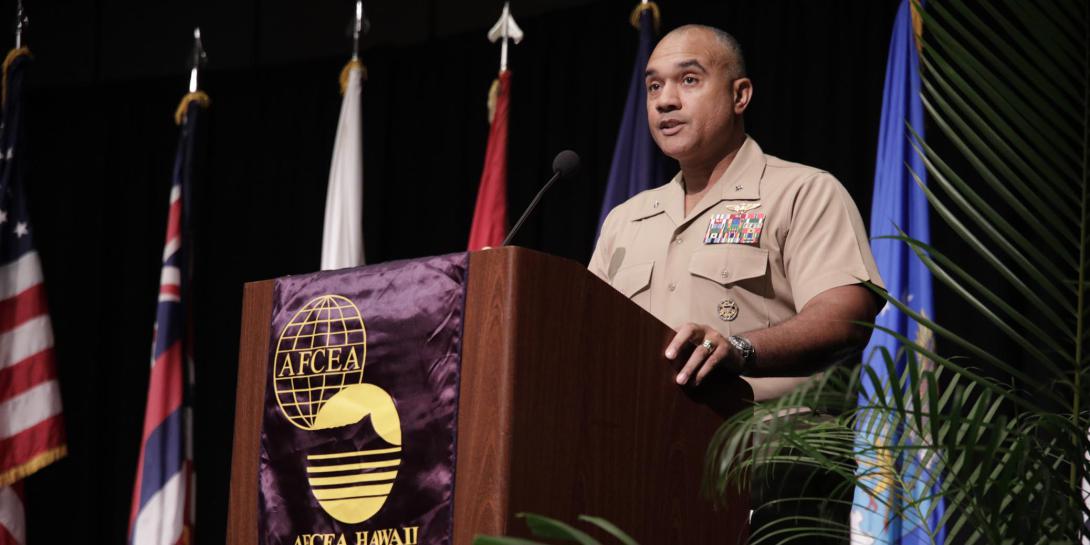Road to Mission Success Paved with Distributed Operations
To obtain mission success, the U.S. military must maintain an emphasis on distributed operations that rely heavily on technological capabilities offered through cyberspace, said Brig. Gen. Brian Cavanaugh, USMC, deputy commander, U.S. Marine Forces, Pacific.
Brig. Gen. Brian Cavanaugh: today's operational environment is as dangerous and complex as it has ever been.#AFCEATechNet
— George Seffers (@gseffers) November 15, 2016
“Our road map is distributed operations enabled through a network centric environment,” Gen. Cavanaugh told the audience at the AFCEA TechNet Asia-Pacific conference in Honolulu, where he was the first day’s keynote luncheon speaker.
Distributed operations will enable smarter, more effective weaponry and greater mission success in the future, the deputy commander indicated. “Imagine multiple platforms acting as sensors; dissemination and distribution nodes; and intelligence, surveillance and reconnaissance beacons across air, sea, space, land and cyber domains. Imagine a Marine or soldier on patrol with network-enabled smart weapons and imagery, video and audio with up and down links to unmanned aviation systems and Joint Strike Fighter, its own advanced network and aviation platform,” he said.
Gen. Cavanaugh: Military must maintain emphasis on distributed operations#AFCEATechNet
— George Seffers (@gseffers) November 15, 2016
He also suggested that unmanned aerial systems and F-35s downlink data to long-range targeting capabilities, such as land-based artillery fire detection centers or sea-based supporting arms coordination centers.
“Imagine the Marines with robotics integrated into the squad through manned and unmanned teaming. I can visualize all of that,” Gen. Cavanaugh continued, adding that the Marines are interested in technologies that “enable command and control and distributed operations.”




Comments